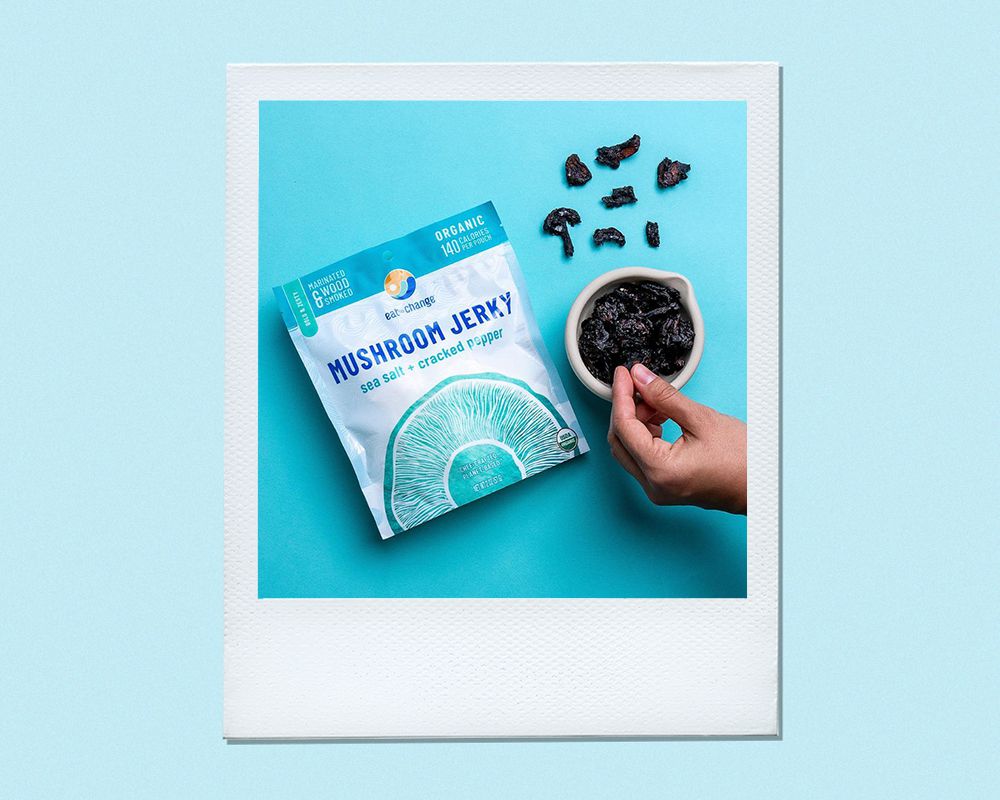Dry Brushing Cellulite: A Complete Guide
If you’ve ever searched for at-home skincare remedies, there’s a good chance you’ve stumbled across dry brushing before. “Dry brushing—known as garshana—is the Ayurvedic practice of massaging dry skin for health,” says Shadoh Punnapuzha, the founder of Ayurvedic beauty brand Taïla. The beauty of the technique is that it takes very little in terms of both tools and effort to bring about soothing, skin-enhancing effects—hence why it’s so popular for DIY skin treatments. “To perform dry brushing you can use ubtans (herbal pastes), loofahs, dry brush, or silk gloves,” Punnapuzha says.
To find out whether or not dry brushing for cellulite and other skin conditions is for you, keep reading to learn what it is, where it originated, and all the benefits a simple, circular swipe of the brush can bring about.
What Is Dry Brushing?
Dry brushing is an exfoliation technique that uses a soft-bristle, palm-sized brush to slough away dead skin cells and effectively stimulate circulation and lymphatics in the process.1
According to Punnapuzha, the technique originated in India over 5,000 years ago and is recommended as a necessary routine in the holistic medicinal science of Ayurveda thanks to how beneficial it is in preserving health and a youthful body. “This ancient practice is very much a part of daily beauty routines even throughout India today,” she adds.
Some devotees tout that, with regular dry brushing of two to four times per week, the skin appears smoother and firmer, thus reducing the overall appearance of cellulite in the short term (more on that, below). “This could be attributed to improved lymphatic flow, stimulating the blood flow within the skin and soft tissue, and massaging adipose tissue and the fibrous bands, which make up the cellulite deposits,” explains board-certified dermatologist and Surface Deep founder Alicia Zalka, MD. “This would be best achieved with following dry brushing with a warm bath or shower and then completing the process with an immediate generous application of moisturizing oil, cream, or lotion.”
Benefits of Dry Brushing
- Smoother skin
- Softer skin
- Increased blood flow
- Improved skin radiance
- Stimulated lymphatic system
- Temporary reduced appearance of cellulite1
To start, who doesn’t love smoother, softer skin? Board-certified dermatologist Dendy Engelman, MD, says that, through exfoliation, “dry brushing improves skin appearance by removing the top layers of the skin through weakening the lipids that bond them together, thus removing dull and dead skin cells and revealing healthy skin cells.”
But notice how we said a reduced appearance of cellulite? One of the most-talked-about benefits of dry brushing is a reduction in cellulite as a whole, but according to board-certified dermatologist Michele Green, MD, it’s a temporary visual result of the practice. “Having increased circulation from dry brushing will cause vasodilation (that’s when your capillaries widen, causing an increased amount of blood flow in the area),” she explains. “This will cause a temporary plumping up of the skin, making your cellulite appear less visible.”
Practitioners like Punnapuzha believe that dry brushing can not only improve the appearance of already-established cellulite but prevent more from forming, too. “According to Ayurveda, cellulite is merely the accumulation of fat,” Punnapuzha says. “A heavy, sticky substance that sits in the fat cells, cellulite can be very difficult to eliminate. And the longer it sits there, the harder it may be to remove. However, [Ayurveda believes] dry brushing helps to gently dissolve cellulite by breaking up fat deposits and preventing new cellulite from forming because the massage improves the circulation of the lymph areas that are prone to cellulite. Over time you can see a difference if done regularly.”
Beyond the visible, complexion-polishing benefits of dry brushing, Punnapuzha points out that the practice can be great emotionally as well. Since dry brushing stimulates the lymphatic system and helps to rapidly rid the body of toxins, she says that it can induce an incredibly calming experience and is a great way to relieve stress and relax muscles.
How to Practice Dry Brushing
While dermatologists and Ayurvedists disagree when it comes to the specific science of dry brushing, all of the experts agree that, when done correctly, dry brushing can reduce the appearance of cellulite (at least temporarily). The process is fairly easy to master, so read on for the proper technique.
Step One: Choose the Right Brush
“Use a natural-bristle brush that has an easy-to-grasp handle,” says Zalka. This is a consumer-favorite model, but you might also opt for a paddle design (which fits in the palm of your hand), or a dry brush with a longer, ergonomic handle for reaching tough angles.
Step Two: Brush in Upward, Circular Motions
“In circular, rotational motions, rub the brush over the skin starting with the feet and working upward toward the heart to properly massage the lymphatic system,” Zalka instructs, noting to avoid any areas of skin that exhibit inflammation, scratches, or open sores. “Do this prior to a bath or shower, and immediately upon toweling off your wet skin, apply copious amounts of moisturizer while your skin is still somewhat damp.”
Step Three: Repeat Up to Three Times Per Week
After your first round of dry brushing, you may feel like you’re ready to take on the technique each and every day. Zalka says to hold off and opt for just two times per week if you have sensitive or eczema-prone skin or three times for more tolerant skin types. “Do not be overly vigorous, and be more gentle on thin skin areas such as the neck,” she adds. And as always, consult your dermatologist if you have an existing skin condition, or if one appears after dry brushing, stop and consult a dermatologist.1
Side Effects
As many of us know, all good things come with a price. When it comes to dry brushing, Zalka says that vigorous dry brushing can cause skin sensitivity and even abrasions if not done with care, and overzealous dry brushing can lead to prolonged peeling and redness of the skin. Punnapuzha says this is especially true for anyone who already experiences inflamed skin conditions like eczema, chronically dry skin, and psoriasis.
While those side effects can be scary, Green wants us to remember that, at the end of the day, there is nothing wrong with dry brushing so long as you’re not overdoing it.
Just keep in mind that, according to Green, the moment you stop dry brushing regularly, cellulite will come back. “Once your circulation slows down again, so does the ‘plumpness,’” she says. “With that being said, dry brushing does not reduce cellulite permanently, it just makes it less visible for a short period of time.”
The Final Takeaway
Dermatologists and Ayurvedists alike agree that when performed correctly, regular dry brushing (two to three times per week) can help improve circulation, lymphatic drainage, and visibly reduce the appearance of cellulite. Dry brushing originates from Ayurveda, and those who practice Ayurveda believe dry brushing can also help prevent the formation of cellulite. Dry-brushing aficionados swear by this claim, but as for right now, the current research we have access to only prove that dry brushing can temporarily plump the skin to reduce the appearance of cellulite, not permanently erase it or prevent new cellulite from forming.1 We’ll take it!










